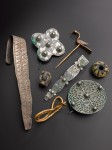 The Queen’s and Lord Treasurer’s Remembrancer (QLTR) has allocated the Galloway Viking Hoard to the National Museums Scotland (NMS) on the condition that they make an ex gratia payment of £1.98 million ($2,550,000) to the finder Derek McLennan who discovered the hoard in 2014. NMS has until November of this year to raise the sum. They’ve set up a donation site (which is showing me a DNS error at the moment, probably because it’s brand new).
The Queen’s and Lord Treasurer’s Remembrancer (QLTR) has allocated the Galloway Viking Hoard to the National Museums Scotland (NMS) on the condition that they make an ex gratia payment of £1.98 million ($2,550,000) to the finder Derek McLennan who discovered the hoard in 2014. NMS has until November of this year to raise the sum. They’ve set up a donation site (which is showing me a DNS error at the moment, probably because it’s brand new).
The bulk of the find is a rich Viking-age hoard of silver jewellery and ingots. However, it also contains an outstanding range of exceptional precious metal and jewelled items including a rare gold ingot, a gold bird-shaped pin and a decorated silver-gilt cup of Continental or Byzantine origin. The cup is carefully wrapped in textiles and is the only complete lidded vessel of its type ever discovered in Britain or Ireland. This vessel contains further unusual objects:
beads; amulets of glass and rock crystal; pilgrimage relics; a silver penannular brooch; another rare gold ingot; five Anglo-Saxon disc brooches of a kind not found in Scotland before; and jewelled aestels, pointers used to read and mark places within medieval manuscripts.
Other finds from around Britain or Ireland have been exceptional for a single type of object—for example, silver brooches or armlets. However, the Galloway Hoard is unique in bringing
together a remarkable variety of objects in one discovery, hinting at hitherto unknown connections between people across Europe and beyond. It also contains objects which have never before been discovered in a hoard of this age. Incredibly, fragile textiles, leather and wooden fragments have also survived, providing an extremely rare opportunity to research and reveal many lost aspects of the Viking Age.
The Dumfries and Galloway Council, which launched a campaign earlier this year to keep the hoard in the county where it was discovered, is less than pleased with the QLTR’s decision.
Cathy Agnew, Campaign chair, said: “This treasure was buried in Galloway for safekeeping 1,000 years ago – it is deeply disappointing that the QLTR believes it should be allocated to the National Museum in Edinburgh where it will potentially be lost amongst so many other wonderful artefacts.
“This is a most unfortunate decision for the region and for Scotland. It is doubly disappointing that a more enlightened approach has not been taken, especially as 2017 is Scotland’s Year of History, Heritage and Archaeology.
“The support from the public, from academics, politicians of all parties, and so many others – across Scotland and the world – to keep the hoard in Galloway, where it would be cherished, has been magnificent. It is a real shame their voices and their passion have gone unheeded.”
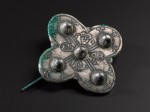 It’s hard for a county council to win against the resources of a national museum, especially when the local museum that would house the hoard has not actually been built yet. They made a valiant effort, drastically increasing the budget for the new Kirkcudbright Art Gallery and raising a great deal of money and support for the cause of keeping the hoard in Dumfries and Galloway. They knew it was a long shot, however, and all the while hoped to be able to come to an agreement with NMS for joint ownership.
It’s hard for a county council to win against the resources of a national museum, especially when the local museum that would house the hoard has not actually been built yet. They made a valiant effort, drastically increasing the budget for the new Kirkcudbright Art Gallery and raising a great deal of money and support for the cause of keeping the hoard in Dumfries and Galloway. They knew it was a long shot, however, and all the while hoped to be able to come to an agreement with NMS for joint ownership.
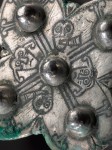 National Museums Scotland showed no interest in shared custody. It thinks it is the proper home for a treasure of international significance, because they have the wherewithal and expertise to give it all the care and security such complex, delicate archaeological materials need. The preservation of the extremely rare surviving organic remains in particular requires specialists and facilities that the National Museums can provide. Its location in Edinburgh will also “ensure that the Hoard is seen by the maximum number of people, from Dumfries and Galloway, Scotland, the UK and internationally.”
National Museums Scotland showed no interest in shared custody. It thinks it is the proper home for a treasure of international significance, because they have the wherewithal and expertise to give it all the care and security such complex, delicate archaeological materials need. The preservation of the extremely rare surviving organic remains in particular requires specialists and facilities that the National Museums can provide. Its location in Edinburgh will also “ensure that the Hoard is seen by the maximum number of people, from Dumfries and Galloway, Scotland, the UK and internationally.”
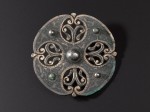 In its press release on the allocation of the hoard, NMS had this to say on Dumfries and Galloway’s involvement:
In its press release on the allocation of the hoard, NMS had this to say on Dumfries and Galloway’s involvement:
National Museums believes that it is important there is a display of the Hoard in Dumfries and Galloway, and intends to continue to seek a dialogue with Dumfries and Galloway Council to ensure that a representative portion of the Hoard goes on long-term display in Kirkcudbright Art Gallery.
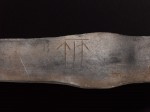 It’s not joint ownership, but it’s something. Had they made a tandem bid that was accepted, the bigger museum would almost certainly have had the greater say in the division and exhibition of assets anyway, so in the end the Kirkcudbright Art Gallery might well end up with much the same sort of display it would have had if they had partnered with NMS.
It’s not joint ownership, but it’s something. Had they made a tandem bid that was accepted, the bigger museum would almost certainly have had the greater say in the division and exhibition of assets anyway, so in the end the Kirkcudbright Art Gallery might well end up with much the same sort of display it would have had if they had partnered with NMS.